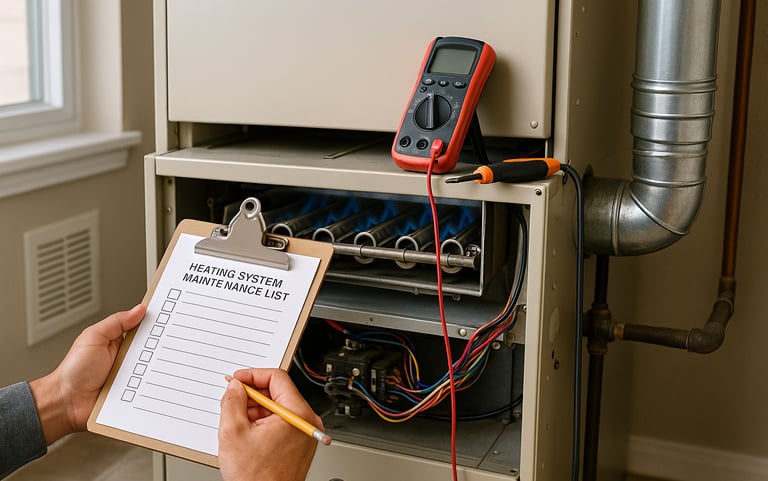Heating System Maintenance Checklist: Reduce Emergencies, Save Money


Image: ChatGPT.com
A December Guide for Landlords & Property Investors
As colder temperatures settle in across Maryland and the Mid-Atlantic region, reliable heating becomes one of the most important aspects of maintaining rental properties. For landlords and investors, December is the perfect month to review, inspect, and tune up heating systems before truly frigid days arrive. Not only does proactive maintenance keep tenants warm and satisfied, but it also reduces emergency repair calls and protects your investment from costly mid-winter breakdowns.
Heating system failures rarely happen at a “convenient” time. They tend to occur on holidays, nights, or weekends—when service fees are highest. A preventative approach can dramatically reduce those headaches.
Below is a practical Heating System Maintenance Checklist tailored specifically for landlords and rental portfolios.
1. Schedule a Professional Furnace/Boiler Inspection
Heating units work hard during winter, so annual tune-ups are critical.
Key tasks a technician should perform:
Inspect heat exchanger for cracks or leaks
Clean burner and pilot assembly
Test carbon monoxide output
Replace or clean filters
Check ignition control and blower
Why it matters:
Preventative tuning can extend system lifespan by 5–10 years and avoid emergency mid-season breakdowns.
2. Replace HVAC Filters Regularly
This simple task is one of the easiest ways to reduce heating costs.
Landlord Tip: Provide tenants with extra air filters or set up a quarterly filter service. Tenants often won’t remember—and clogged filters stress the system, reduce airflow, and raise utility bills.
3. Inspect and Clear All Vents and Returns
Blocked vents make heating systems work harder.
Checklist:
Ensure furniture is not blocking vents
Check baseboard heaters for dust buildup
Verify that registers open and close properly
Bonus: Clean vents improve indoor air quality (a tenant satisfaction win).
4. Check Carbon Monoxide and Smoke Detectors
Heating systems, especially gas-powered ones, pose real safety risks.
Best Practices:
Test all detectors in the property
Replace batteries
Ensure units are no older than recommended lifespan (typically 7–10 years)
This is not just best practice—it’s often required by local rental laws.
5. Ensure Proper Insulation & Weatherproofing
Heat loss leads to higher bills and harder-working systems.
Steps to take:
Seal around windows and exterior doors
Install draft blockers or weatherstripping
Add insulation to attics or crawl spaces if needed
A well-sealed property means lower energy costs and longer HVAC life.
6. Communicate Winter Expectations to Tenants
A short winter-prep message can prevent preventable damage.
Example tenant reminder:
Keep heat no lower than 55°F when away to prevent frozen pipes
Report unusual sounds, cold spots, or rising utility bills early
Keep vents unblocked for system airflow
Clear expectations help tenants feel supported—and help landlords avoid costly freeze damage.
7. Document Everything
Maintenance records matter, especially for:
Insurance claims
Warranty compliance
Future sale of the property
Keeping detailed notes shows responsible property management and protects long-term asset value.
Final Thought: Winter Maintenance Protects ROI
Smart landlords understand that preventative maintenance is not an expense—it’s an investment.
When heating systems run efficiently:
Tenant satisfaction increases
Emergency maintenance decreases
Property operating costs shrink
Long-term asset value improves
Staying proactive today prevents stress and expense tomorrow.
For more information on properties located in Harford & Baltimore County, MD, click here.


